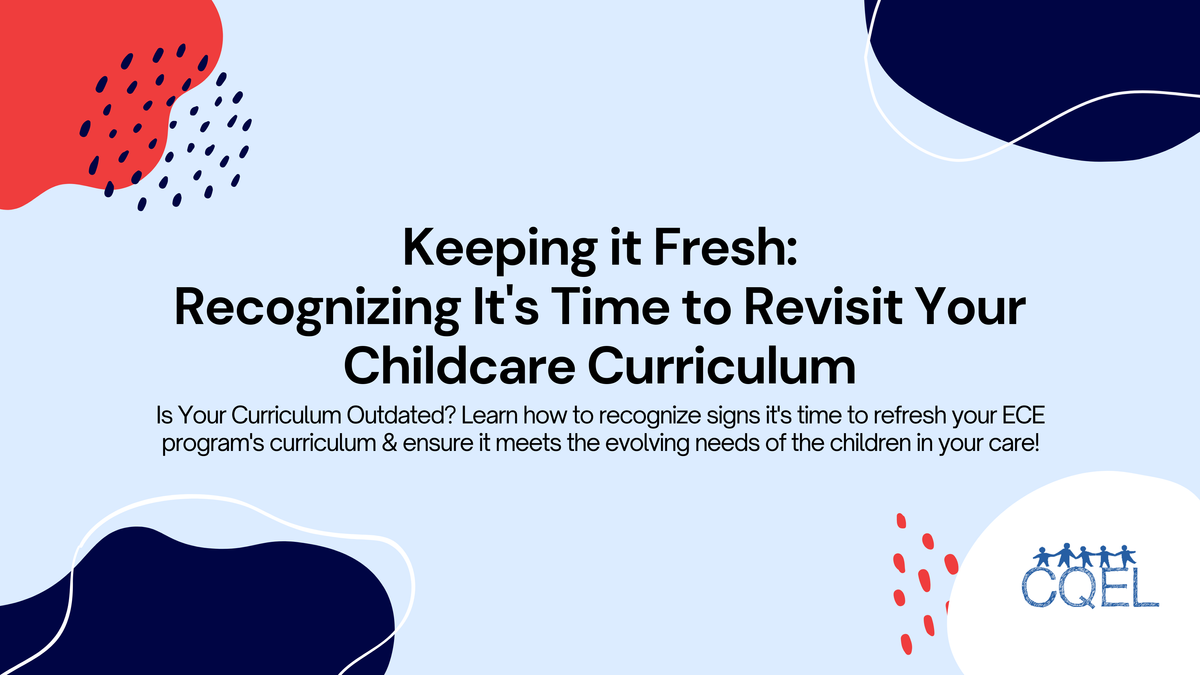Keeping it Fresh: Recognizing It's Time to Revisit Your Childcare Curriculum
Is your curriculum outdated? Learn how to recognize signs it's time to refresh your ECE program's curriculum & ensure it meets the evolving needs of the children in your care!

In the dynamic world of early childhood education (ECE), a well-designed curriculum is the cornerstone of a stimulating learning environment. However, even the most effective curriculum can become outdated or need adjustments over time. As an aspiring childcare provider in California, recognizing the signs that it's time to revisit your curriculum is crucial for ensuring it continues to meet the evolving needs of the children entrusted to your care. Let's explore some key indicators that might suggest a curriculum refresh is in order.
The most important gauge of a curriculum's effectiveness is its impact on the children themselves. Are they actively engaged in activities? Does the curriculum seem to challenge and stimulate them intellectually, socially, and emotionally? If you notice a general lack of enthusiasm or consistent disengagement during specific activities, it might be a sign that the curriculum no longer aligns with the children's developmental stage or interests. Another red flag is a lack of progress in developmental domains outlined in California's Early Learning and Development Standards (ELDS). Are children meeting developmental milestones at a steady pace, or do you observe gaps in specific areas? Regularly tracking progress and comparing it to the ELDS benchmarks can reveal areas where the curriculum might need adjustments to better support individual and overall development.
Communication with parents is another valuable tool for assessing your curriculum's effectiveness. Do parents express concerns that the activities are repetitive or not stimulating enough for their child? Open communication allows you to gain valuable insights into their expectations and identify areas where the curriculum might not be fully addressing the children's needs and interests. Furthermore, staying current with the latest research and best practices in ECE is essential. Perhaps new research has emerged highlighting the importance of specific learning approaches or activities that your current curriculum might not incorporate. Professional development opportunities offered by childcare resource and referral agencies can equip you with valuable strategies and keep you informed about advancements in the field.
Change itself isn't always a bad thing. As your program evolves, the children you serve might have different needs or interests than previous groups. Perhaps your program has expanded to include a wider age range, necessitating a curriculum that caters to different developmental stages. Similarly, demographic shifts within your community might call for incorporating activities that reflect the children's cultural backgrounds or languages spoken at home. A curriculum that remains flexible and adaptable allows you to cater to the unique needs of each child entrusted to your care.
Remember, a thriving curriculum is a living document, not a static one. By being attentive to the needs of the children, maintaining open communication with parents, and staying current with best practices in ECE, you can ensure your curriculum remains a powerful tool for fostering a stimulating and enriching learning environment for all children in your California childcare program.
